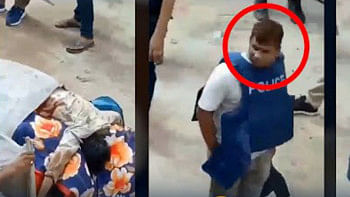<i>Republican tea party at Nepali ex-king's palace</i>
There have been countless tea parties on the immaculate lawns of Kathmandu's royal palace but none like the latest one, when the edifice, now stripped of its monarch, officially became a museum.
On Sunday, Nepal's elderly prime minister raised the national flag over the stately complex as Maoist revolutionaries rubbed shoulders with army brass to watch the pink-hued building turned over to public use.
Veteran republican activist Ramraja Prasad Singh was visiting the sprawling palace grounds for a third time, but the first as a free man.
"I was here as a prisoner twice before," said the 73-year-old, who bombed royal statues in Kathmandu in 1985.
"King Mahendra saw me when I was brought in as a prisoner in 1971. He tried to buy me off and I told him I was not for sale," said Singh.
Nepal's monarchy was abolished by a Maoist-dominated assembly late last month, the culmination of a rocky two-year peace pact between the former rebels and mainstream parties.
Ex-king Gyanendra, who took authoritarian control of the nation in early 2005 only to be forced to end it by mass protests 14 months later, left the palace last week to begin life as a commoner.
Ambassadors turned up to the event in spotless saloon cars and four-wheel drive vehicles, as Maoist leaders arrived in battered-looking cars packed with cadres.
For Singh, the event marked the end of a long road that began in the early 1960s when he started to campaign for Nepal to become a republic.
"My whole aim, my mission in life has been to overthrow the monarchy. I never wanted to be anybody's subject or slave," he said.
"I never actually believed this day would come."
Outside the palace, crowds of curious onlookers peered through the high metal gates as police officers, aided by immaculate palace security officers, ushered hundreds of guests into the grounds.
Future visitors to the Himalayan country's newest national museum will have plenty to look at when it opens to the public in about a month.

 For all latest news, follow The Daily Star's Google News channel.
For all latest news, follow The Daily Star's Google News channel. 




Comments